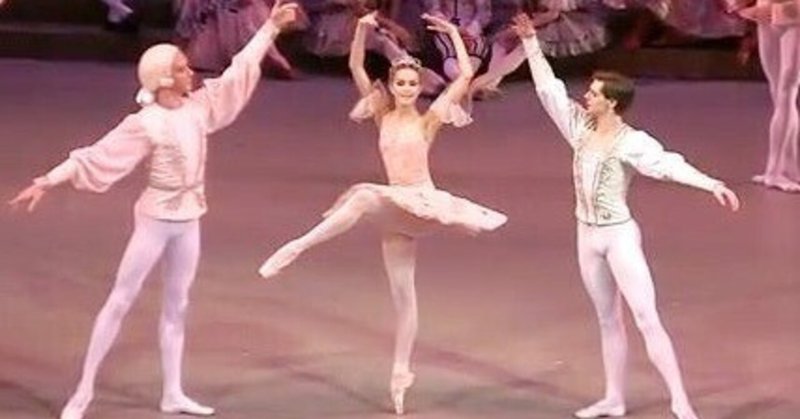
くるみ割り人形
くるみ割り人形は、チャイコフスキーの名作バレエ音楽と、それに基づいたバレエ作品です。この記事では、そのあらすじや音楽の特徴、上演の歴史などについて紹介します。
くるみ割り人形のあらすじ
くるみ割り人形は、2幕構成のバレエ作品です。第1幕は、クリスマス・イヴにくるみ割り人形をプレゼントされた少女クララが、夢の中でねずみと戦ったり、雪の国を訪れたりする場面です。第2幕は、お菓子の国で金平糖の精やくるみ割り人形と一緒に楽しむ場面です。以下に詳しく見ていきましょう。
第1幕
クララの家では、クリスマス・パーティーが開かれています。おもちゃ職人のドロッセルマイヤーは、くるみ割り人形をクララに贈ります。しかし、クララの弟フリッツは、くるみ割り人形を奪って壊してしまいます。ドロッセルマイヤーは、くるみ割り人形を修理してクララに返します。パーティーが終わり、皆が寝静まった後、クララはくるみ割り人形を見に忍び出します。すると、時計が12時を打ちます。突然、ねずみの大群が現れてきます。くるみ割り人形も動き出し、兵隊の姿になってねずみと戦います。ねずみの王とくるみ割り人形が一騎打ちになりますが、くるみ割り人形は負傷してしまいます。クララはくるみ割り人形を助けようとしてねずみの王に靴を投げつけます。その瞬間、魔法が解けてくるみ割り人形は王子様になります。王子様はクララに感謝し、雪の国へ連れて行きます。
第2幕
雪の国では、雪の女王や雪の精たちがくるみ割り人形とクララを歓迎します。彼らは雪のワルツを踊ります。その後、お菓子の国へ向かいます。お菓子の国では、金平糖の精が待っています。金平糖の精は、くるみ割り人形とクララがねずみと戦ったことを聞いて感心します。彼女は彼らにお礼として様々な国の踊りを見せてくれます。チョコレート(スペイン)、コーヒー(アラビア)、紅茶(中国)、トレパック(ロシア)、牧歌的な踊り(フランス)、マザージンジャー(デンマーク)、花のワルツ(全員)などです。最後に、金平糖の精と王子様は美しいパ・ド・ドゥを踊ります。その後、王子様とクララは金平糖の精に見送られて帰路につきます。しかし、これはすべてクララの夢だったことがわかります。
くるみ割り人形の音楽
くるみ割り人形は、チャイコフスキーが作曲した3つのバレエ音楽の中で最後の作品です。チャイコフスキーは、この作品においても自分の音楽的な才能を発揮しました。音楽は、明快で美しいメロディや、様々な楽器の魅力的な響きが特徴です。特に有名なのは、第2幕で金平糖の精の踊りに使われるチェレスタの音色です。チェレスタは、鍵盤を叩くと金属の板が鳴る楽器で、チャイコフスキーはこの作品で初めて使用しました。チェレスタの音色は、お菓子の国の幻想的な雰囲気を表現するのにぴったりでした。
くるみ割り人形の上演
くるみ割り人形は、1892年にサンクトペテルブルクのマリインスキー劇場で初演されました。しかし、当時はあまり評判が良くありませんでした。その後、1920年代になってから西欧で再評価されるようになりました。特に、1944年にニューヨークで行われたジョージ・バランシンの振付による上演は大成功を収めました。それ以来、くるみ割り人形はクリスマス・シーズンには欠かせない作品となりました。現在では、世界中で様々なバージョンが上演されています。
まとめ
くるみ割り人形は、チャイコフスキーの傑作バレエ音楽と、それに基づいたバレエ作品です。クリスマス・イヴにくるみ割り人形を贈られた少女クララが、夢の中でお菓子の国を訪れるという物語です。音楽は、簡潔で美しいメロディや、様々な楽器の魅力的な響きが特徴です。特に有名なのは、第2幕で金平糖の精の踊りに使われるチェレスタの音色です。この作品は、クリスマスにちなんだ作品であることから毎年クリスマス・シーズンには世界中で盛んに上演されます。クラシック・バレエを代表する作品の一つであり、私たちを夢の世界へと誘います。
The Nutcracker
The Nutcracker is a ballet based on Tchaikovsky's famous ballet music. In this article, we will introduce the plot, the characteristics of the music, and the history of the performance.
The Nutcracker synopsis
The Nutcracker is a two-act ballet. In the first act, Clara, a young girl who is given a Nutcracker as a gift on Christmas Eve, fights with mice and visits a snowy land in her dreams. The second act is a scene where the children have fun together with the Confection Fairy and the Nutcracker in the land of sweets. Let's take a closer look below.
Act 1
A Christmas party is being held at Clara's house. Drosselmeyer, a toymaker, presents her Nutcracker to Clara. However, Clara's brother Fritz steals her Nutcracker and destroys it. Drosselmeyer repairs her Nutcracker and returns it to Clara. After the party is over and everyone is asleep, Clara sneaks out to see the Nutcracker. Then the clock strikes 12 o'clock. Suddenly, a horde of mice appears. The Nutcracker also begins to move and transforms into a soldier to fight the mouse. The Mouse King and the Nutcracker engage in a duel, but the Nutcracker is injured. Clara tries to save the Nutcracker by throwing her shoe at the Mouse King. At that moment, the spell is broken and the Nutcracker becomes a prince. The prince thanks Clara and takes her to the land of snow.
Act 2
In the land of snow, the Snow Queen and the snow fairies welcome the Nutcracker and Clara. They dance the snow waltz. After that, we will head to the land of sweets. In the land of sweets, the fairy of konpeito is waiting for you. The Sugar Fairy is impressed when she hears about the Nutcracker and Clara's battle with the mouse. She shows them dances from various countries as a thank you. These include Chocolate (Spain), Coffee (Arabia), Tea (China), Trepac (Russia), Pastoral Dance (France), Mother Ginger (Denmark), and Waltz of the Flowers (everyone). At the end, the confetti fairy and the prince dance a beautiful pas de deux. Afterwards, the prince and Clara are seen off by the confetti fairy and set off on their way home. But it turns out that this was all Clara's dream.
nutcracker music
The Nutcracker is the last of Tchaikovsky's three ballet scores. Tchaikovsky also showed his musical talent in this work. The music is characterized by clear and beautiful melodies and the attractive sounds of various instruments. Particularly famous is the celesta tone used in the dance of the confetti fairy in the second act. The celesta is an instrument in which a metal plate makes a sound when the keys are struck, and Tchaikovsky used it for the first time in this work. The sound of the celesta was perfect for expressing the fantastical atmosphere of the land of sweets.
Nutcracker performance
The Nutcracker premiered in 1892 at the Mariinsky Theater in St. Petersburg. However, it did not have a very good reputation at the time. Later, in the 1920s, it began to be reevaluated in Western Europe. In particular, the performance choreographed by George Balanchine in New York in 1944 was a great success. Since then, The Nutcracker has become a staple of the Christmas season. Various versions are now performed around the world.
summary
The Nutcracker is a ballet based on Tchaikovsky's masterpiece. The story is about a girl, Clara, who is given a Nutcracker doll on Christmas Eve and visits a land of sweets in her dreams. The music is characterized by simple and beautiful melodies and the attractive sounds of various instruments. Particularly famous is the celesta tone used in the dance of the confetti fairy in the second act. Since this work is related to Christmas, it is performed actively all over the world during the Christmas season every year. It is one of the representative works of classical ballet, and invites us to a world of dreams.

よろしければサポートお願いします! いただいたサポートはクリエイターとしての活動費に使わせていただきます!

